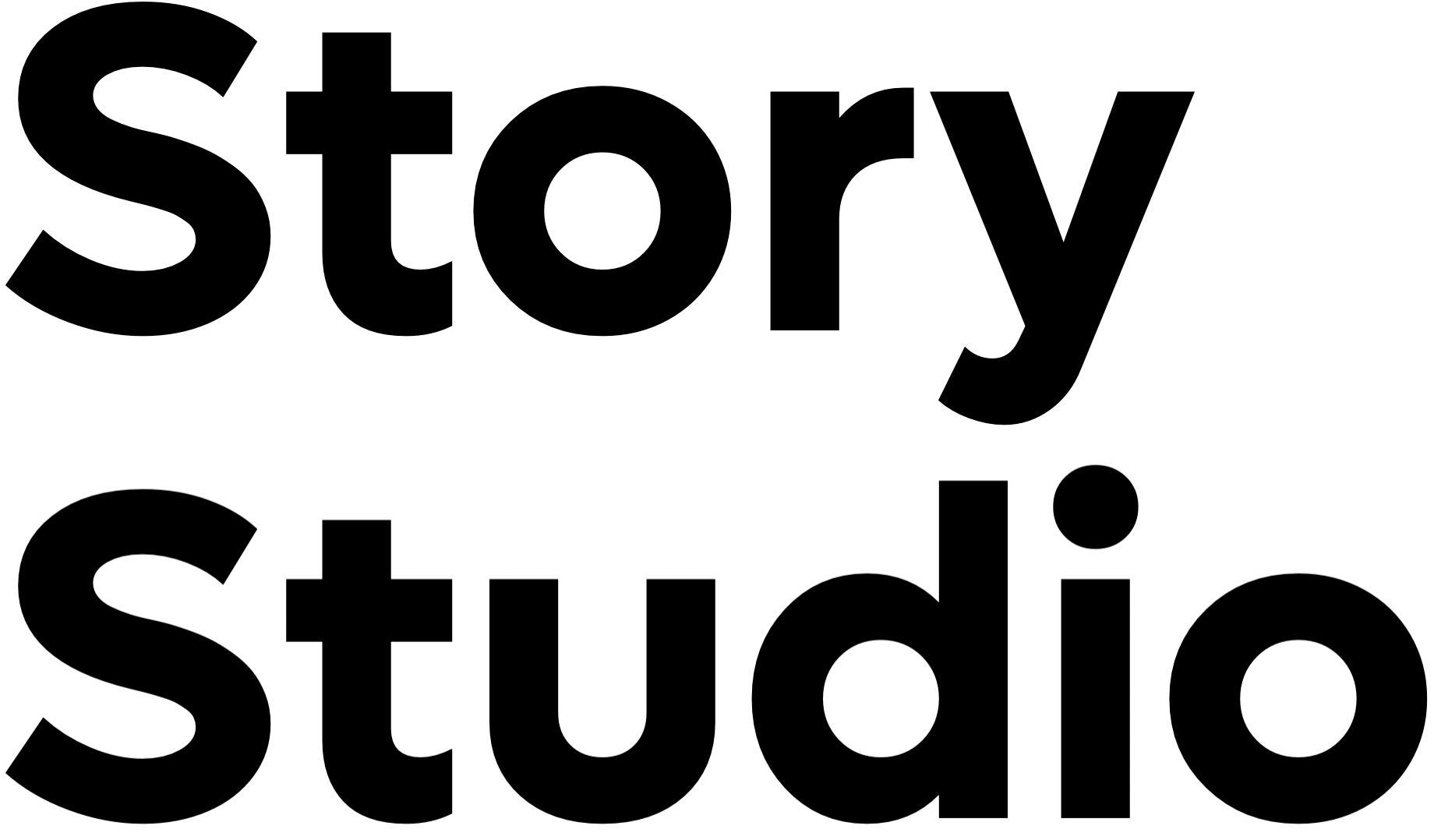We’re about to break down the essential ingredients every customer success story needs. Things we’ve learned from literally years of writing customer stories for billion-dollar businesses to seed-stage startups and everything in between.
By the end, you’ll be able to create impactful case studies that drive real business outcomes.
Let’s go!
1. Customer success stories must be highly "intentional"
Your customer story must have a “job to be done” – a higher purpose. Simply showcasing every feature of your tool, or facet of your service, isn’t enough.
Sure, a generic customer story can be impressive. It can get results. But having multiple assets in your arsenal, purposefully designed to achieve different things, is way more effective than loads of one-size-fits-all stories.
So first things first, before you put pen to paper, write down the following:
- The GOAL you want to achieve with the story
- The TOPIC that serves that goal
- The AUDIENCE that has an interest in that topic
- The reader’s desired TAKEAWAY or outcome
- GOALS: Enter new market, hedge above competitors, upsell existing customers, make a sale, etc.
- TOPICS: Clients who switched from competitor, KPI-driven successes, long-term customers that upgraded, customers who succeeded in specific industry, etc.
- AUDIENCES: CTO, CMO, CEO, end user, etc.
- TAKEAWAYS: Switch from competitor with confidence, upgrade, book a demo, place order
2. Choose a story framework
Lorem ipsum dolor sit amet, consectetur adipiscing elit. Ut elit tellus, luctus nec ullamcorper mattis, pulvinar dapibus leo.
99.9% of customer success stories follow the CHALLENGE —> SOLUTION —> RESULTS framework.
This framework is fine. We often use it – it’s tried and tested.
However, the best customer success stories have more than this basic framework under the hood. They have
There are so many potential frameworks to choose from. Here are five we like most. We’ve given them cool names:
- The Game Changer: Shows transformation achieved through strategic partnership, positioning your solution as the driver/catalyst.
- The Roadmap: Details the step-by-step customer journey. Aims to provide to prospect that they can reach similar milestones by leveraging your services/products.
- The Debunker: Directly addresses audience objections or doubts by sharing examples that disprove assumptions or remove doubt and confusion.
- The Lifesaver: Explains how your products or services helped business overcome a specific challenge your prospect faces, particularly if previous solutions failed.
- The Integrator: Demonstrates how your offering seamlessly integrates with processes and platforms your prospect uses. Removes switching anxiety/objections.
You want to highlight business growth enabled by our business. So you tell Game Changer stories about clients who expanded services and benefited from our products.
Or, you’re aware you sell a complex product that confuses buyers. So you tell Debunker stories that simplify them with reference to real-world scenarios.
3. Don't forget: your customer is the hero
The best success stories mirror the challenges, actions, and resolutions of your prospect’s own experience. This spurs a level of relatability that outshines basic facts.
However, when you construct your narrative, resist the urge to make your product or service the central hero of the story.
Showcasing your solution is crucial. But the true protagonist should be the customer.
Focus the narrative on telling your client’s transformation story to create a relatable journey prospects can see themselves embarking upon.
Follow the customer’s path from initial pain points through evaluating solutions, onboarding, hitting milestones, and eventually realizing results.
The challenges overcome and goals achieved should soak up the limelight–this is what audiences really care about. Not your product’s impressive features features of your
Audiences today are bombarded by ads all day emanating from every device. They’re incredibly wary of straight marketing hype. Be authentic rather than trying too hard to sell. This will help you stand out.
4. Putting it all together
Now comes the craft of weaving together the raw elements of your story, including interview, company, and industry data, into a strategic story arc that captivates audiences. Let’s start with the title.
Write the perfect title
- Call out the name of 1 Customer
- Single out 1 Focus (the key theme, product, or use case spotlighted in the case study)
- Include 1 KPI (a tangible metric, ideally a real number, conveying size/scale of achievement)
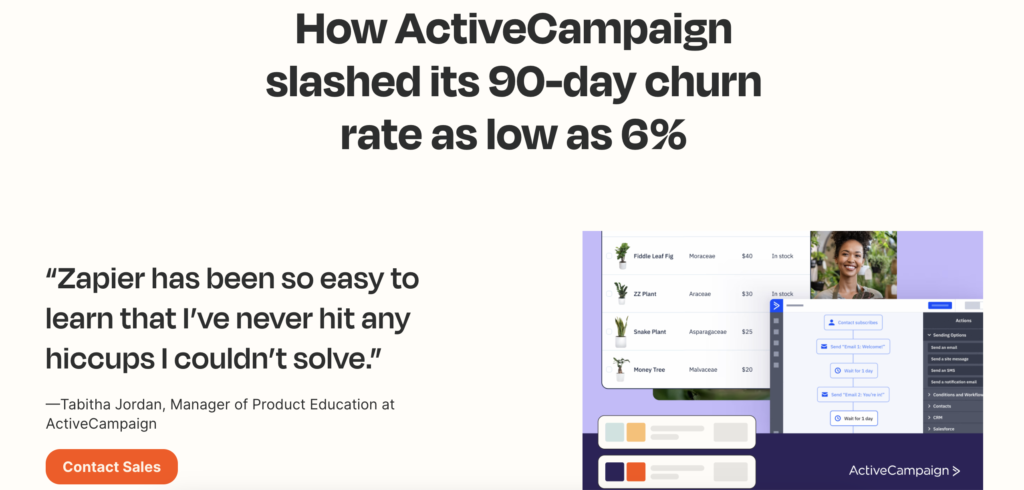
Establish the fundamental narrative components
- The Status Quo: What was the customer struggling with beforehand? Set the stage with the pain points or challenges that establish why change was needed.
- The Turning Point: How did the customer realize they needed to actively seek out a solution? Outline decision-maker drivers.
- Obstacles Overcome: Detail setbacks, objections raised, and risks taken while adopting your product and working towards outcomes. This builds emotional investment.
- The Resolution: Spotlight successes unlocked through implementing your solutions. Emphasize business objectives achieved and metrics improved in clear, measurable terms.
Add supporting elements to make story pop
Stats
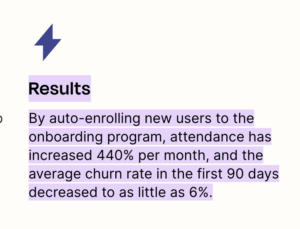
Pull quotes and head shots
Scatter resonant customer quotes liberally throughout the story. Ringing endorsements “straight from the horses mouth” build trust. Add headshots for relatability.

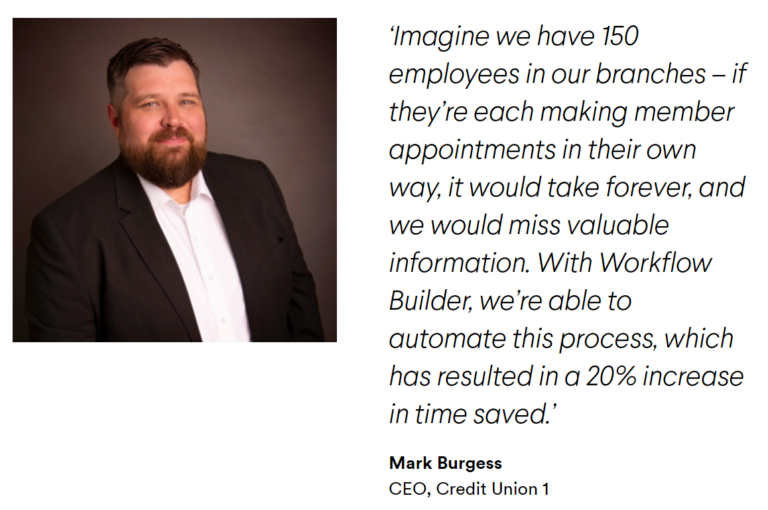
Infographics and visuals
Include images representing the featured customer and their product offering. Make these images aspirational, representing a future your prospect wants to be part of.
Include charts representing workflow efficiencies, cost savings, or revenue gains attributable to your offerings. And other visual elements that bring your story to life and make people want to read it (not always the case!)
Remember, the design is almost as important as the content contained within your story. Treat the asset like a shop window for your brand. If it looks great, prospects will aspire to work with you.
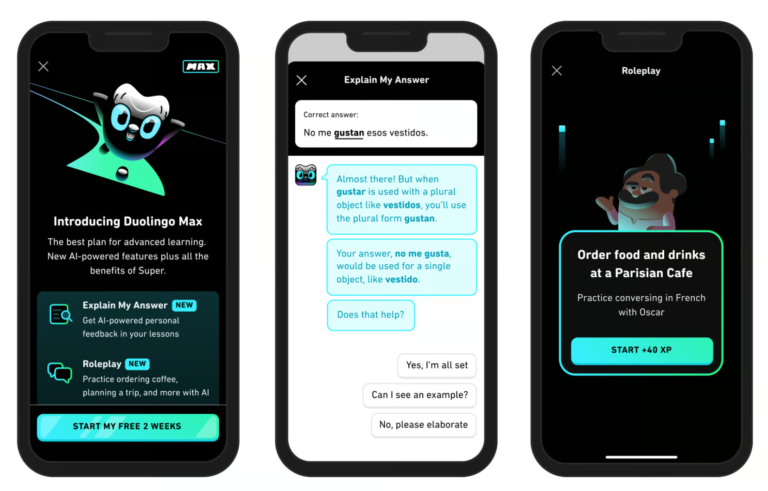
The moral of the story
A well-crafted customer success story is a powerful tool in any marketing arsenal, capable of building trust, demonstrating value, and driving action.
Focusing on the customer’s journey, leveraging storytelling frameworks, and ensuring a clear, relatable narrative can help you create stories that resonate and drive tangible business results.
Remember, the best success stories illuminate the journey of overcoming challenges, the transformation achieved, and the human experiences behind the success.
Stats and facts will bolster your narrative, but keep it human.
Related Posts
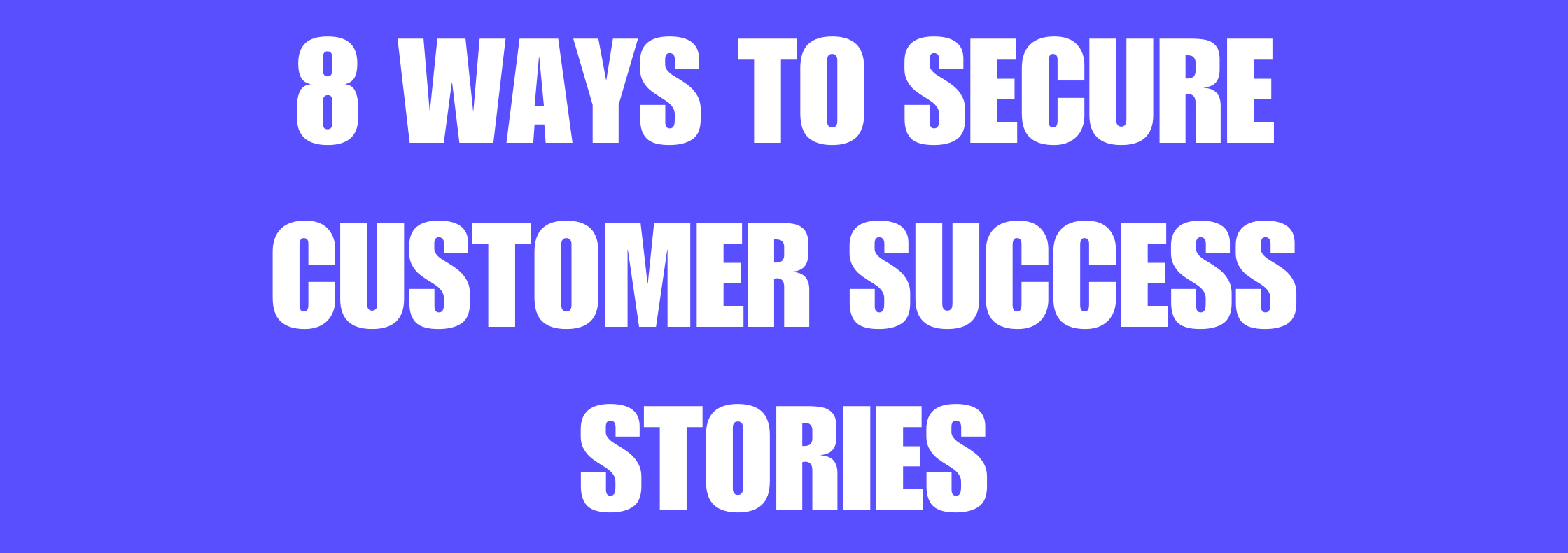
8 Ways to Secure Customer Success Stories
Getting customers to share their brand stories and case studies publicly can provide immense value to your marketing and sales
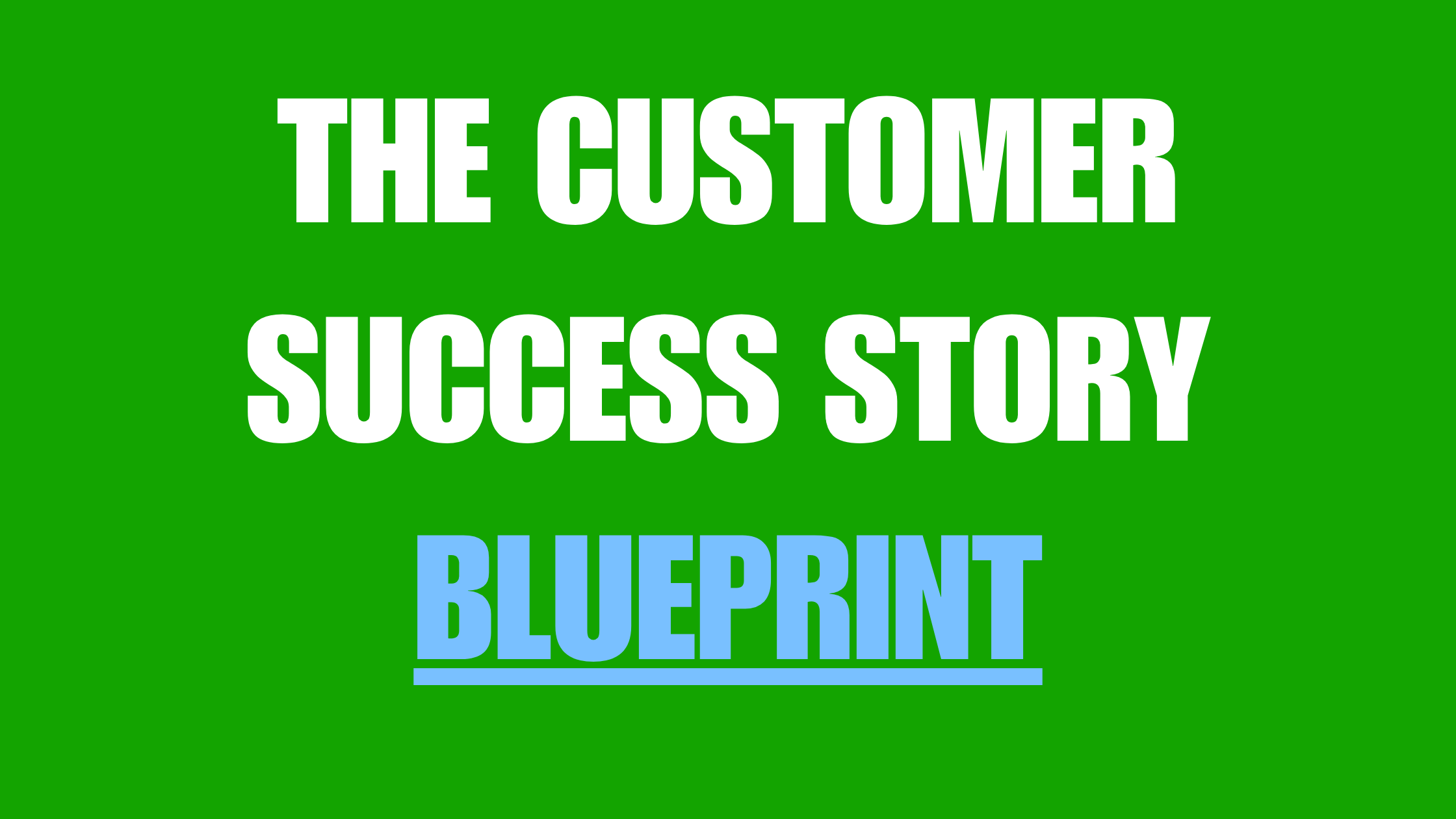
Customer Success Story Blueprint
We’re about to break down the essential ingredients every customer success story needs. Things we’ve learned from years of writing
